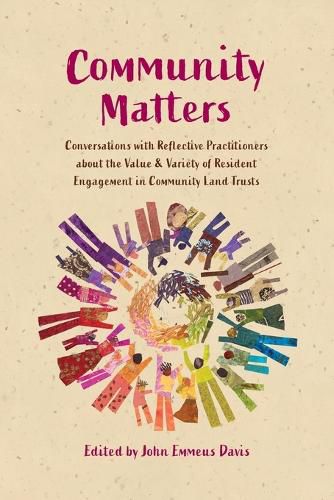Readings Newsletter
Become a Readings Member to make your shopping experience even easier.
Sign in or sign up for free!
You’re not far away from qualifying for FREE standard shipping within Australia
You’ve qualified for FREE standard shipping within Australia
The cart is loading…






This title is printed to order. This book may have been self-published. If so, we cannot guarantee the quality of the content. In the main most books will have gone through the editing process however some may not. We therefore suggest that you be aware of this before ordering this book. If in doubt check either the author or publisher’s details as we are unable to accept any returns unless they are faulty. Please contact us if you have any questions.
Community land trusts (CLTs) are distinguished from many other nonprofit housing developers by the degree to which residents of the places served by a CLT are woven into the culture, structure, and operation of the organization itself. This participatory element-the "C" in CLT-is just as important to what a CLT is and does as its distinctive approach to the ownership of land and the stewardship of housing.
Participation is sometimes overshadowed by other organizational priorities, especially when a CLT is rapidly expanding its holdings of land and housing. Yet most CLT practitioners remain passionately committed to involving local residents in their work. For them, community matters as much as ever-although the manner in which community is conceived, purposed, and practiced has become increasingly complex.
The practitioners featured in the present volume epitomize the persistence of this commitment to community-and its complexity. Working with CLTs in Boston, Brussels, Houston, London, and San Juan, they have championed a variety of strategies for giving residents an active voice in planning and development. They have also changed strategies when needed. The stories of these experienced practitioners explore the whys and ways of keeping "community" alive in organizations like theirs. They offer a virtual master class in resilient resident engagement.
$9.00 standard shipping within Australia
FREE standard shipping within Australia for orders over $100.00
Express & International shipping calculated at checkout
This title is printed to order. This book may have been self-published. If so, we cannot guarantee the quality of the content. In the main most books will have gone through the editing process however some may not. We therefore suggest that you be aware of this before ordering this book. If in doubt check either the author or publisher’s details as we are unable to accept any returns unless they are faulty. Please contact us if you have any questions.
Community land trusts (CLTs) are distinguished from many other nonprofit housing developers by the degree to which residents of the places served by a CLT are woven into the culture, structure, and operation of the organization itself. This participatory element-the "C" in CLT-is just as important to what a CLT is and does as its distinctive approach to the ownership of land and the stewardship of housing.
Participation is sometimes overshadowed by other organizational priorities, especially when a CLT is rapidly expanding its holdings of land and housing. Yet most CLT practitioners remain passionately committed to involving local residents in their work. For them, community matters as much as ever-although the manner in which community is conceived, purposed, and practiced has become increasingly complex.
The practitioners featured in the present volume epitomize the persistence of this commitment to community-and its complexity. Working with CLTs in Boston, Brussels, Houston, London, and San Juan, they have championed a variety of strategies for giving residents an active voice in planning and development. They have also changed strategies when needed. The stories of these experienced practitioners explore the whys and ways of keeping "community" alive in organizations like theirs. They offer a virtual master class in resilient resident engagement.